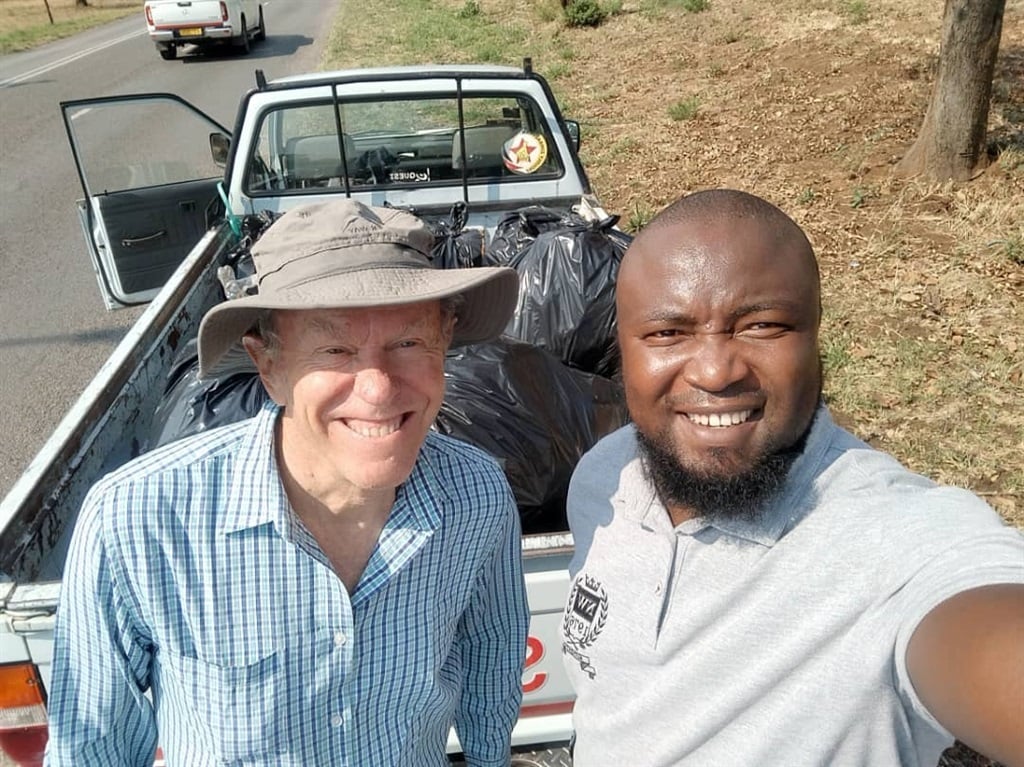When the lion known to researchers as MAGM1 was killed by a hunter in Zimbabwe on July 1, not many people outside of that country noticed. The male had been studied for years, but that hardly made his death unique: Two other well-known lions had already been killed in the same area by hunters that year, and more than 60 had met the same fate in the preceding 15 years.
Everything changed on July 28, when nighttime talk-show host Jimmy Kimmel delivered an emotional monologue about MAGM1, using the lion’s nickname: Cecil.
The trophy hunter who’d killed him, a Minnesota dentist named Walter Palmer, had been publicly identified the day before, and Kimmel urged viewers to “show the world not all Americans are like this jackhole.” Kimmel directed them to the website of the University of Oxford research project that had studied Cecil and his peers since 1999, the Wildlife Conservation Unit, or WildCRU.
Within an hour, 4.4 million hits had caused the WildCRU and Oxford sites to crash. For the next week, the unit’s head, biologist David Macdonald, did nonstop phone, Skype and TV interviews in the garden outside his offices while a backlog of more than 240 requests grew in his inbox. At the same time, outrage about Cecil’s killing spread like a contagion across traditional and social media: On July 29, more than 99,000 articles and social media posts about Cecil were published, according to a new paper by Macdonald and his colleagues.
“The university says that in its 800 years of history, it has never experienced a level of engagement with the public like this before,” Macdonald told the environmental news site Mongabay in February. “This was a unique episode in the history of wildlife conservation in terms of media coverage.”

Cecil the lion rests in Hwange National Park, in Hwange, Zimbabwe. (Andy Loveridge/Wildlife Conservation Research Unit via AP)
But would the Cecil Moment, as he and his colleagues deemed it, become a Cecil Movement that forever changed the way people think about wildlife? That’s the question Macdonald and his team ponder in their new paper on the global spiral of attention to the lion’s death — and it’s one that’s particularly intriguing following Montana authorities’ recent announcement that another beloved and well-studied animal, the Yellowstone grizzly bear known as No. 211 or Scarface, was shot and killed in the fall, perhaps illegally.
Death at Yellowstone: Feds probe shooting of ‘Scarface’ the park’s most famed grizzly https://t.co/UJRmHDEnmVFirst Cecil, now Scarface. SMH
— Curtis Scoon (@CurtisScoon) May 3, 2016
As news of Scarface’s death has spread, so have comparisons to Cecil. Could the bear, some observers have wondered, become another conservation icon?
The Cecil snowball
If we take the Oxford researchers’ paper as a guide to how a wildlife story becomes viral, that doesn’t look terribly likely. But before we get to why that is, it’s worth reviewing their findings.
To analyze the Cecil story’s spread, they used a media monitoring service to count editorial and social media articles and mentions of Cecil the lion, across the world and in 125 languages. There was a “remarkable global synchrony” to the intensity of coverage, they found — while the amount varied and was highest in North America, it spread wildly across platforms and languages. When they controlled for access to the Internet, they found that interest was unrelated to a country’s infant mortality rates, economy, conservation policy or governance.
Attention to Cecil declined over the next month, but it remained high compared to most conservation stories.
“At the least,” the authors wrote, “the Cecil Moment is a prolonged one.”
But here’s the rub for the Scarfaces of the natural world: An unusual — and extremely media-friendly — set of circumstances surrounded Cecil’s killing. As Macdonald and his colleagues point out, Cecil was “majestic,” well-studied, had an English nickname and a death under dubious circumstances. Scarface also had those (if you stretch the definition of “English nickname” to an Al Pacino character) elements.
But Cecil’s story also featured untrue reports that the animal was lured to his killing, as well as a prolonged death at the hands of a white, male, wealthy American who was identifiable, “as opposed to amorphous villains such as polluting industries in the case of climate change,” the researchers wrote. It took place against the backdrop of a declining lion population, and it was a trophy hunt for which Palmer had paid $50,000.
Also read
- Another Lion Murder, Another Outrage—But This Time, A Different Story
- American hunter Palmer shot Cecil the lion but some facts are being misconstrued
- Hunter who helped an American dentist kill Cecil the lion seeks discharge from court
- Cecil the lion killer has no case to answer: Minister
- Dear World: A few reflections on our Cecil, the Zimbabwean Lion
- Zimbabwe’s ‘iconic’ lion Cecil killed by hunter
- Cecil the lion park Tour guide mauled to death by lion
- Zimbabwe looks to cull 200 lions after hunters stay away in wake of US dentist killing ‘Cecil’
That last detail in particular fueled indignation, as did the argument by some conservationists that the profits from trophy hunting helpfully fund conservation, the authors wrote, saying it was widely viewed as “morally despicable” and akin to “justifying slavery on the basis of its revenue generating capacity.”
“It seems plausible then that it is their combination, certainly unusually and perhaps uniquely, that led to the viral explosion,” they wrote of the Cecil circumstances. Their paper was published in the journal Animals.

Piper Hoppe, 10, from Minnetonka, Minn., holds a sign at the doorway of Walter Palmer’s dental clinic in protest against the killing of Cecil the lion. (Eric Miller/Reuters)
The Scarface situation
Montana and federal authorities, who are investigating Scarface’s death as a possible violation of the Endangered Species Act, haven’t yet identified the person who killed the elderly grizzly, a protected species whose population has grown to the point that it is proposed for delisting. There’s been much speculation that it was an elk hunter, possibly one who was threatened by the bear, but there’s no confirmation of that. But it’s clear that No. 211, whose body was left behind, probably wasn’t killed by a hunter who traveled across the world with the intent of hanging a bear head on his wall.
The details of Scarface’s shooting, when and if they become public, might yet inspire outrage. But Andrew Loveridge, a wildlife biologist who runs WildCRU’s lion research in Zimbabwe and co-authored the paper, said he isn’t so sure.
The cocktail of factors in the Cecil case “helped to create a snowball effect and resulted in a classic ‘tipping point’ phenomenon where trends go viral,” Loveridge said in an email. “I’ve done research on lions for 16 years, I’ve had many study animals die (many at the hands of trophy hunters) and none of these even made the local news. These animals were all named, many were locally known, and many were as well studied as Cecil.”
In light of that, Loveridge said, “it is hard to say whether a similar story would resonate with the global public in the same way as Cecil’s. I wonder whether the Cecil story has sensitized people to issues of this kind.”

Scarface, also known as Bear no. 211, photographed in wildflowers on Dunraven Pass in Yellowstone in 2011. (Sandy Sisti/Wild at Heart Images)
Will Cecil have a long tail?
For the WildCRU team that analyzed the Cecil coverage, one pertinent question is whether the event can be harnessed for the good of lion conservation, and for wildlife more generally. They argue that if lion trophy hunting is ended as a result — which isn’t a totally crazy possibility, given that many U.S. airlines banned the import of big-game trophies post-Cecil — there’s a need for “radical thinking” about how to make up for any lost conservation revenue.
They sort of punt on the question of whether Cecil totally changed the wildlife conservation atmosphere — saying, essentially, that it seems to be the case, but it’s not yet clear.
But if the Cecil Moment was more than fleeting, they write: “For those concerned with how wildlife is to live alongside the human enterprise, this is a moment not to be squandered, and one which might have the potential to herald a significant shift in society’s interaction with nature.”-WP






